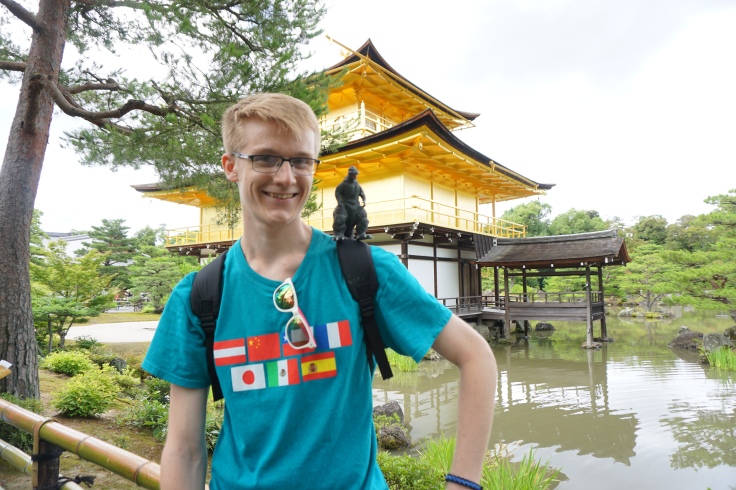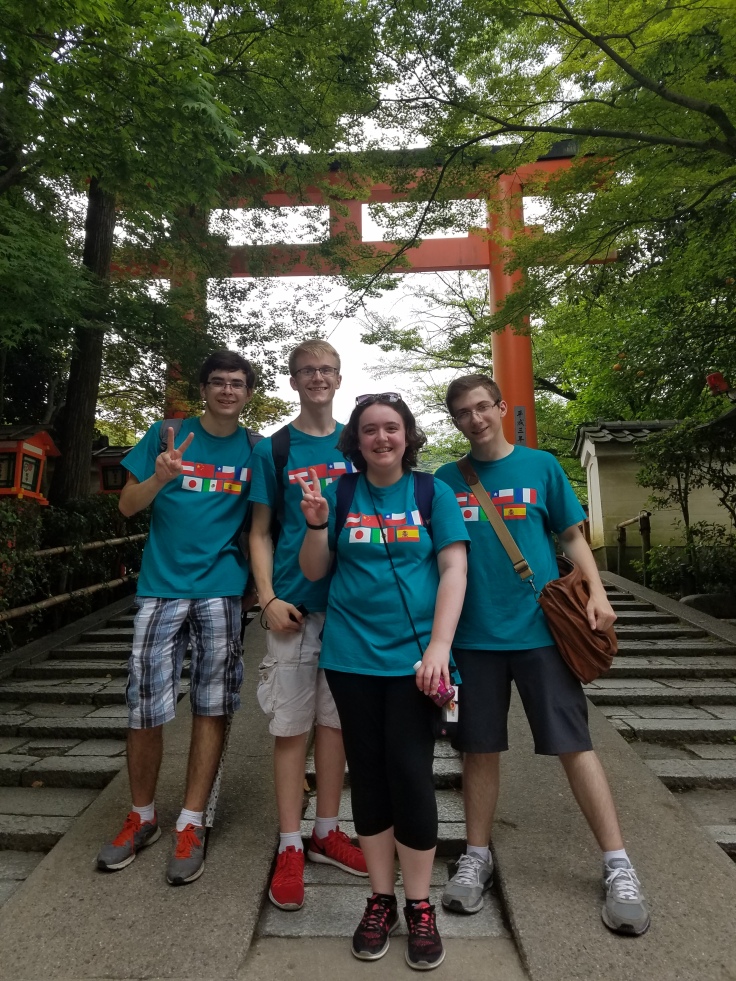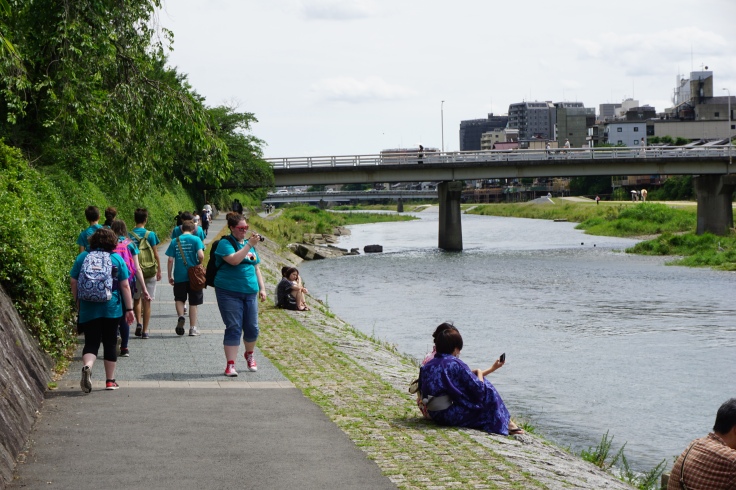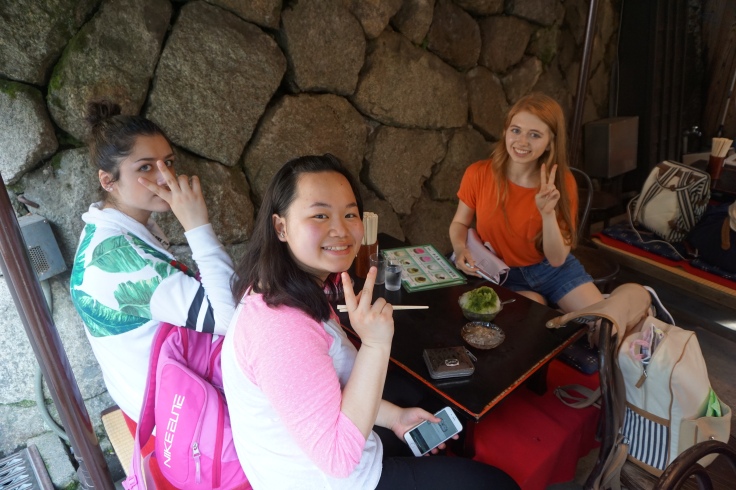The ensoku to Kyoto was one of the trips our students were most looking forward to, but I’ll admit, it was also one of the trips I was personally most worried about. Kyoto hosts more than a million tourists from Japan and abroad during the Gion Festival alone, and we were going to be there on the first day of it. The forecast on all major networks in Japan also called for heavy rain. However, my prediction about being unable to enjoy this transcendent metropolis was, much like the weather forecast, laughably inaccurate.
The students have now fully adjusted to train commuting, with the possible exception of Jacob, who relies almost exclusively on his bike. The train ride from our high school stop to Kyoto is direct and rather convenient, so we arrived, figured out where to go on the bus, and headed off to Kinkakuji, the Temple of the Golden Pavilion. When we arrived, at the gate, there was a large bell, and ringing it symbolized our arrival, but for some reason, all the students got shy and I ended up being the one announcing that IUHPFL had come.
The temple really speaks for itself, though, so perhaps it’d be best just to enjoy the pretty pictures we came there for.




Godzilla has been travelling with us, as well, courtesy of Jacob:

The gardens around the pavilion have many spots for meditation. Some of the students took a seat on one of the stones where a famous philosopher is said to have found enlightenment.
A temple is, though, after all, a place to be solemn and reflect. The students joined in the tradition of wafting the incense (o-kou) over the parts of their body they want to be blessed: usually the head for wisdom, but also any parts of their body that are ailing them.
The students then went for some matcha ice cream while Wayne got another legendary temple stamp for his shuin from the temple. I took a video of the calligrapher drawing beautiful work and then stamping it with several official vermillion insignias before finding out it was also very much against the rules to take pictures, as evidenced by a giant “no pictures” sign in Japanese and English. So, for now, just imagine it.
Kinkakuji is a beautiful monument and a staple Buddhist landmark, but it is also very far away from many of the other tourist spots in Kyoto, so we had a bit of a trek ahead of us, and unlike most other cities in Japan, Kyoto’s train system covers much less of the city, since so much of the land is of historic significance and can’t be just dug up for a subway. So, we hopped on a bus and then walked through the famous Gion district (for which the festival is named) to get to Yasaka Jinja, one of the more significant Shinto landmarks and the host of the festival itself.




As the students learned in their culture class, Yasaka Jinja is dedicated to a famous god in Shintoism named Susanoo-no-mikoto, who is said to have defeated a hydra and established peace in the region. The shrine itself dates back possibly more than 100 years before even the Heian period in Japanese history, so it has a very special place in the development of Japanese Shintoism, and more than 3,000 satellite shrines throughout the country. Upon entering the shrine, typically there is a place to wash your hands and purify yourself for entry into the sacred area. The students seemed to have already adjusted to this quite well, although perhaps another motivation for washing their hands was the food at the different festival stalls that had just been set up.



At this point, the students broke off for some free time to explore.








We then headed back out to the Gion area for lunch. I’m honestly amazed that Yonezu-sensei was able to find a lunch place where all of us could sit and eat Kyoto food without spending a fortune, but it was quite a nice experience for us to have a very traditional local meal.


After lunch, we set out for Kiyomizudera, the Temple of Pure Water, something the students were very much looking forward to. The temple is located up on a beautiful hill overlooking the city, but it is essentially inaccessible by train, so we walked along Kyoto’s famous (…ly expensive) riverside district to avoid the crowds for a bit and then trekked up to the famous merchant district at the foot of the temple.





The students had learned in their culture class that the temple is home to Otowa Falls, where the holy water from the top of the mountain is split into three streams, representing the three blessings that are conferred on pilgrims. The students have to choose between wishing for 学力 (gakuryoku, academic prowess), 連運 (ren-un, luck in one’s love life), and 健康 (kenkou, good health). Yonezu-sensei and I both opted for health, but to my surprise, most of the students did not.




By the end of the day, according to Mackenzie’s FitBit, anyway, we had walked a little over 13 kilometres, and Crystal and Mackenzie in particular were quite tired, but everyone really pulled through and made the trip quite memorable. There were lots of gifts purchased, and lots of memories made, just in time to come back to Osaka for a very event-filled week.







